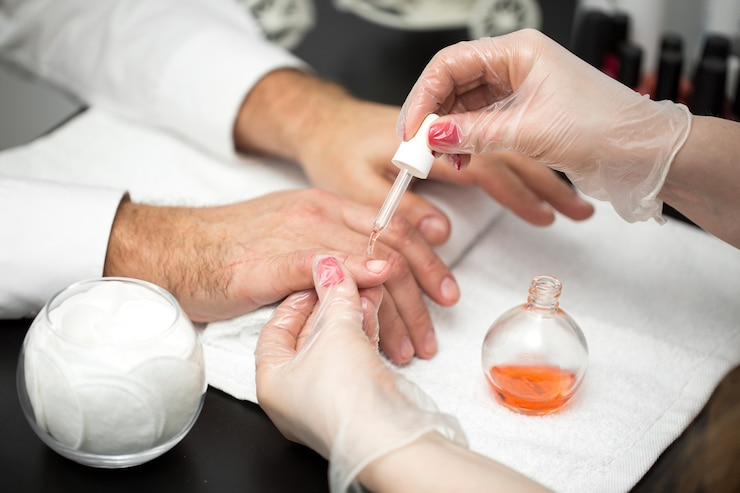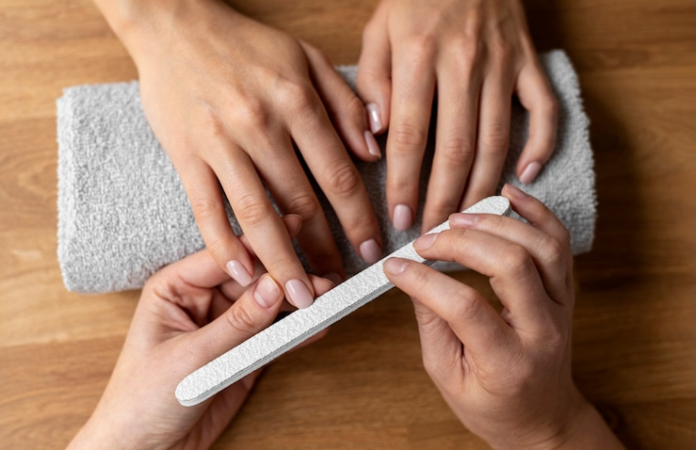Happy nails are more than just pretty polish! They’re a window into your overall health and can leave you feeling confident and put-together. In this guide, “Healthy & Happy Nails: A Guide to Proper Care,” we’ll dive deep into achieving beautiful, healthy nails. From essential care techniques to identifying potential problems, this guide will equip you with the deep knowledge to transform your nails and keep them happy and healthy for the long haul.
What are the problems with lousy nail health?
1. Nail pitting
Forget about having happy nails with those pesky pits! Nail pitting, those tiny craters or indentations marring your manicure, can indicate underlying skin conditions like psoriasis or eczema. It can also be linked to alopecia areata, an autoimmune disease that targets your hair. But fear not, happy nail enthusiasts! This guide will explore the causes of nail pitting and equip you with the knowledge to achieve those beautiful, healthy nails you deserve.
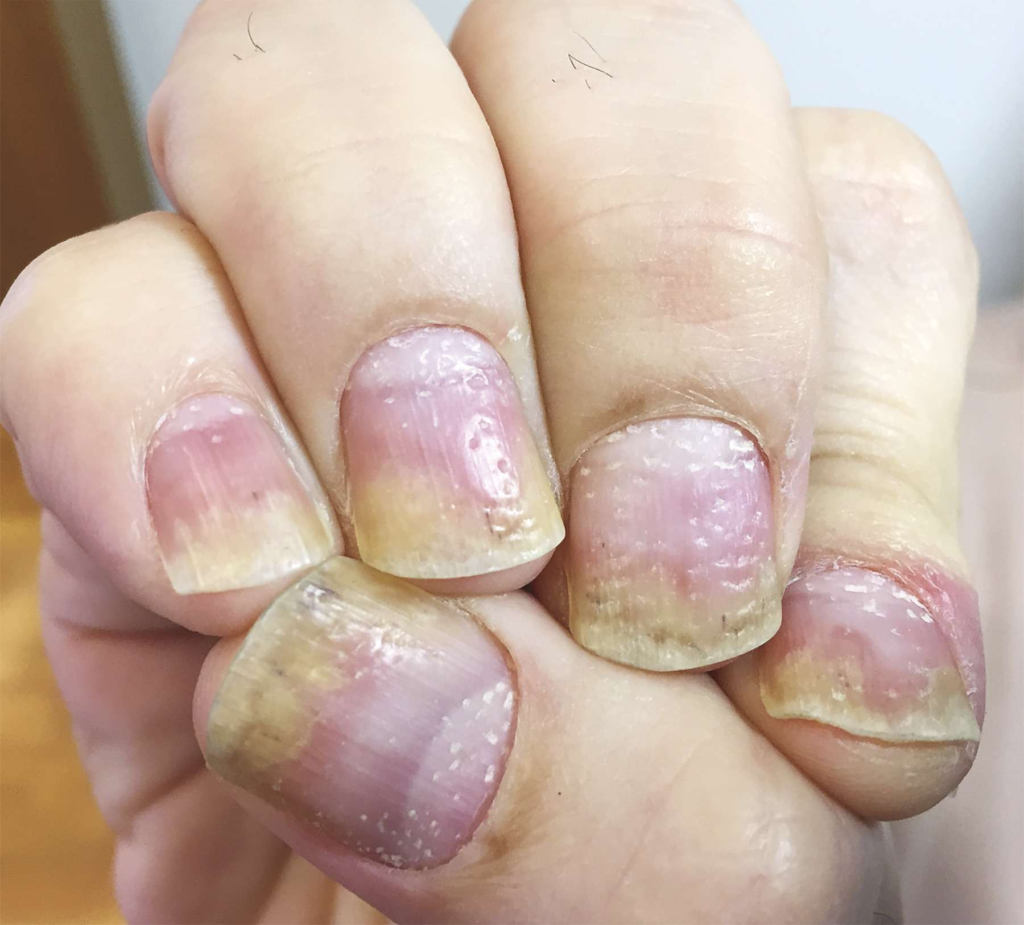
2. Nail clubbing
Are you sporting those natural nails with pride? Keep an eye out for nail clubbing. This condition causes the tips of your fingers to enlarge and the nails to curve dramatically around them, often developing slowly over the years. While not inherently painful, it can signal underlying health concerns. If you notice signs of nail clubbing in your natural nails, it’s essential to consult a doctor. Early detection and treatment of potential causes like low blood oxygen, lung disease, heart problems, or digestive issues can significantly improve overall health and well-being. Remember, beautiful natural nails are a great way to express yourself, but prioritizing your health is always essential.

3. Spoon nails
Forget achieving those cute, trendy spoon nails! These aren’t the kind of trendy curves you want on your manicure. Spoon nails, characterized by soft nails with curved edges, can indicate an underlying health issue. Often, they indicate iron deficiency anemia, where your body lacks the iron needed for healthy red blood cells. However, spoon nails can also be linked to hemochromatosis, a liver condition where the body absorbs too much iron from food. While cute nails are a goal, prioritizing your health is vital. If you notice your nails taking on a spoon-like shape, consult a doctor to identify the cause and get the treatment you need for healthy nails and a healthy you!
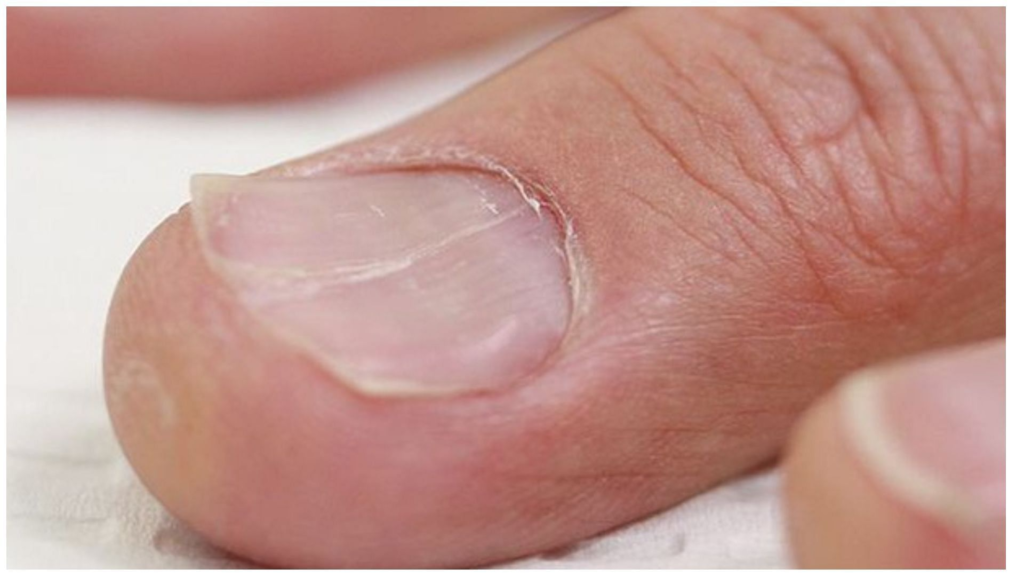
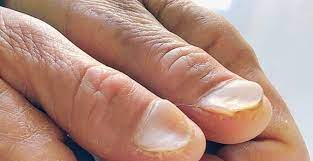
4. Terry’s nails
Don’t be charmed by the apparently harmless white hue of Terry’s nails. This condition, characterized by primarily white nails with a thin pink or red rim at the tip, can cause concern. While aging can sometimes explain Terry’s nails, it can also signify a more serious underlying issue. Liver problems, congestive heart failure, and diabetes are just a few potential culprits. If you notice your nails transforming into this two-toned look, it’s wise to consult a doctor to ensure your happy nails reflect overall good health. Early detection and care can make a big change!
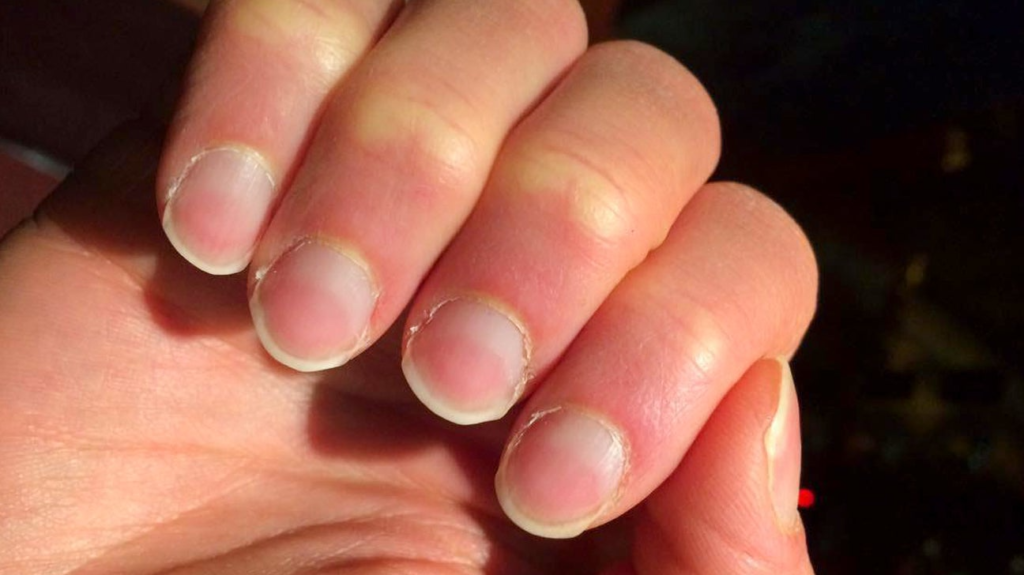
5. Beau’s lines
Beau’s lines: those pesky grooves interrupting your dream manicure might be more than a cosmetic concern. These horizontal indentations across your nails appear when nail growth gets put on hold. While a temporary pause might seem harmless, Beau’s lines can signal underlying issues. Illness, poorly managed diabetes, or even a zinc deficiency can all disrupt nail growth and lead to Beau’s lines.
Certain medications, like retinoids or those used in chemotherapy, can also cause them. If you notice Beau’s lines appearing on your nails, don’t ignore them. Consult a doctor to detect the cause and get the treatment you need. After all, healthy nails are not just about beauty; they can be a window into your overall health. So ditch the worry about Beau’s lines and focus on achieving those strong, healthy nails you deserve!
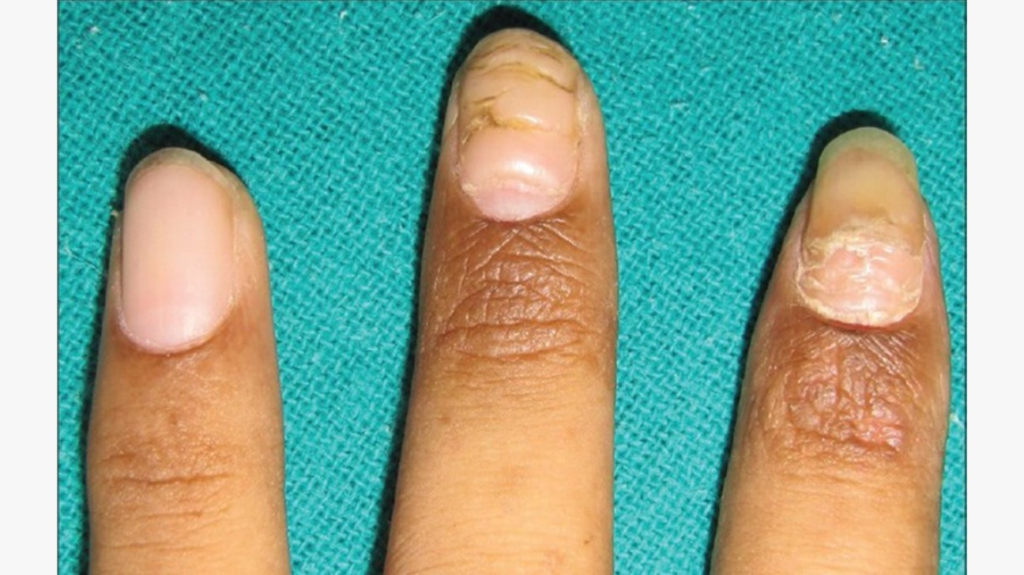
6. Nail separation
Are you waving goodbye to your manicure? Don’t panic quite yet! While a detached nail can be alarming, it doesn’t necessarily spell doom for your dream polish. Onycholysis, the technical term for nail separation, can occur for several reasons. Sometimes, it’s simply the result of an injury or an unwelcome infection. However, onycholysis can also be a reaction to a product you’re using, like harsh nail hardeners or glues. Certain medications or underlying health conditions, like thyroid disease or psoriasis, can cause your nails to separate. The good news? Identifying the cause is vital. If you notice your nails detaching, consult a doctor to determine the culprit. Early diagnosis and treatment can get you back on track to achieving your desired healthy, happy nails!
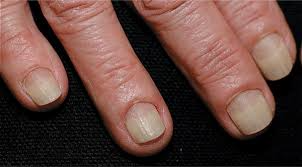

7. Yellow nail syndrome
Notice your once-bright nails turning a dull yellow and growing at a snail’s pace? It might be more than just skipped manis. This could be a sign of yellow nail syndrome. In this condition, nails become thickened and sluggish in their growth, taking on a concerning yellow hue. On top of the discoloration, the nails might lose their cuticle and even start separating from the nail bed in some areas. While the cause of yellow nail syndrome remains a bit of a mystery, it can sometimes be linked to underlying health issues like chronic bronchitis, a lung disease. In other cases, it might be associated with lymphedema, which causes limb swelling. If you spot these signs in your nails, don’t hesitate to consult a doctor. Early identification and treatment of any potential underlying causes can help keep your nails healthy and, more importantly, ensure your overall well being.

Break the cycle of brittle nails. Our product helps you achieve healthy, lasting growth.
Things to do while taking care of your nails
1. Keep your hands very clean
Remember your nails during your regular hand-washing routine! Remove any old polish with an acetone-free remover for a complete clean to prevent dryness. Next, grab a clean toothbrush and apply some soap. smoothly scrub your nails and the surrounding skin using the brush. This nail care technique helps remove dirt and buff away dead skin cells without resorting to harsh chemicals that can damage your nails. By following these simple steps, you’ll promote healthy, clean nails and the rest of your hands.

2. Be gentle on your nails
Keeping your nails healthy requires a gentle touch. Ditch the metal tools for cleaning under your nails; overzealous digging can cause the nail to separate from the skin (onycholysis), especially for those over 50, according to Dr. Stern. Harsh chemicals and frequent handwashing for dishwashing can also weaken your nails. Fortunately, there’s an easy solution: wear gloves! Opt for rubber, vinyl, nitrile, or plastic gloves whenever handling harsh chemicals or tackling handwashing duties. This simple step goes a long way in protecting your nails and promoting overall nail care.

3. Clip your nails regularly
Regular nail clipping is a crucial part of any nail care routine. Unkempt, long nails can harbour dirt and bacteria, increasing your risk of infection. Additionally, long nails can easily break, causing painful snags and tears. For optimal nail health, clip your nails regularly using sharp nail clippers. Aim for a straight-across clip, rounding the edges slightly to avoid ingrown nails. Remember, clipping doesn’t have to be the end of your nail care journey! After trimming, consider treating yourself to a relaxing hand and nail soak, followed by a nourishing lotion or cuticle oil. Regular clipping and these pampering steps will keep your nails healthy, strong, and ready for your next fabulous nail spa visit!
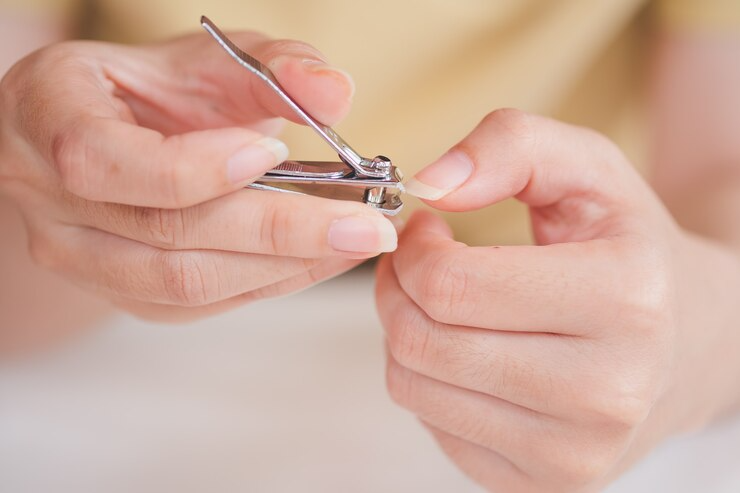
4. Prioritize nail health over length
Regarding your nails, prioritize strength and health over dramatic length. While long, luscious nails might be the ultimate beauty goal, sacrificing health for appearance isn’t sustainable. Weak, brittle nails that break easily are not only frustrating but can also be painful. You’ll create a strong foundation for future growth by prioritizing nail health. It means maintaining a healthy diet rich in essential vitamins and minerals, keeping your nails hydrated, and using gentle yet effective nail care practices. Remember, healthy nails can still grow to a beautiful length, but they’ll be less prone to breakage and splitting. Think of it as an investment; focus on nail health now, and you’ll be rewarded with strong, beautiful nails that can take on any style you desire.
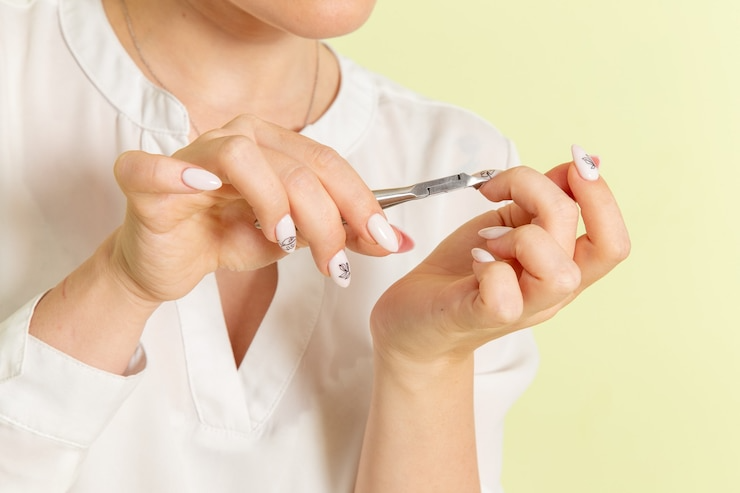
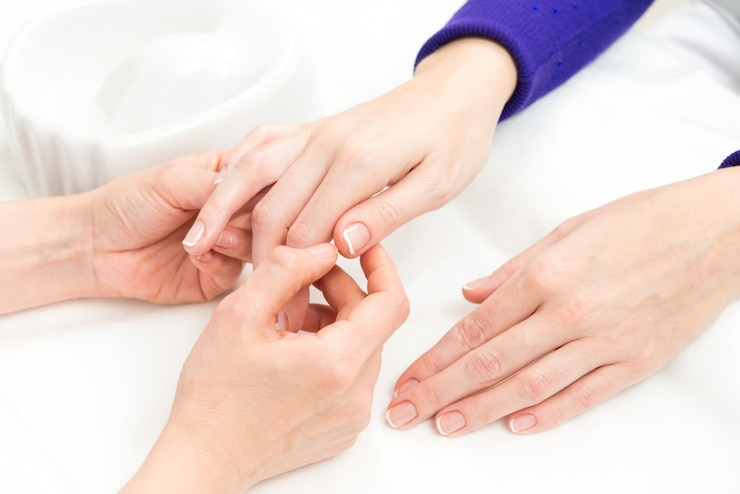
5. Take care of your nail tools
Just like your nails themselves, your nail care tools deserve some TLC! Keeping your nail clippers, files, and cuticle pushers clean and disinfected is crucial for maintaining healthy nails. Think about it: dirty tools can harbour bacteria that can easily be transferred to your nails, potentially leading to infections.
Here’s the simple solution: After each use, wipe down your nail tools with rubbing alcohol or a disinfectant wipe. You can also soak clippers and pushers in a disinfecting solution according to the manufacturer’s instructions. By taking a few minutes to care for your tools, you’ll ensure a hygienic and healthy nail care routine for your precious nails.
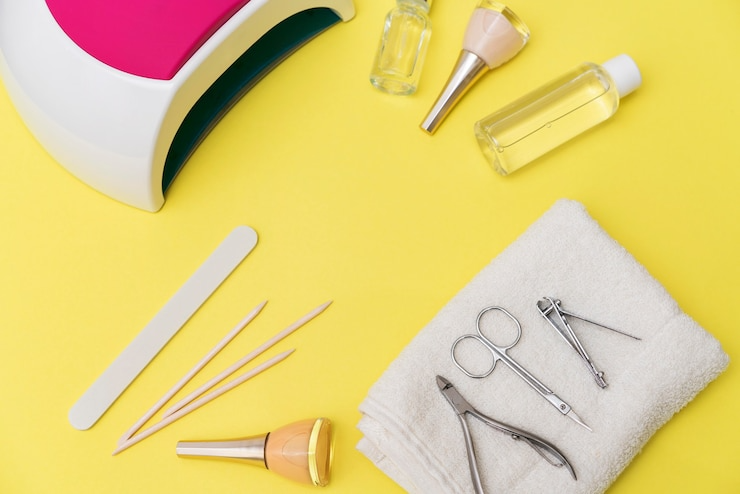
6. Protect your nails with a base coat
Remember to not underestimate the power of a base coat! This thin layer of polish applied before your coloured polish acts like a superhero for your nails. It creates a protective barrier between your natural nail and the potentially harsh chemicals found in some nail polishes. This can help prevent staining, especially from darker colors, and chipping, keeping your manicure looking flawless for longer. Plus, a base coat can even out any ridges on your nail plate, creating a smooth canvas for your favorite polishes to shine. So next time you paint your nails, remember the base coat – it’s a simple step that protects and beautifies your nails.
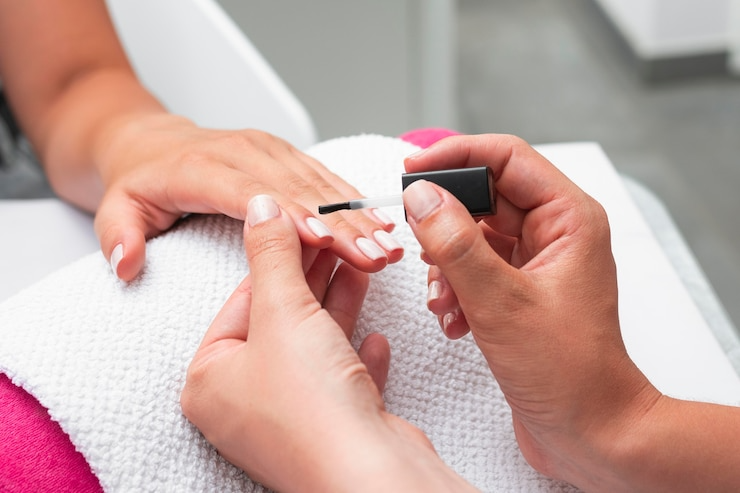
7. Indulge in acrylic or gel treatments sparingly
While acrylic and gel manicures offer undeniable allure with chip-resistant color and extended wear, consider them occasional treats rather than a routine nail care practice. The application process often involves buffing the nail plate and using strong chemicals, which can weaken your natural nails over time. The removal process can also be harsh, sometimes requiring soaking in acetone-based solutions that can further dry and damage your nails.
If you love the look and feel of acrylics or gels, opt for them for special occasions. In between, allow your natural nails to breathe and recover. Focus on strengthening them with a healthy diet, regular moisturizing, and gentle nail care practices. This balanced approach will allow you to enjoy both the beauty of artificial enhancements and the health of your natural nails.
